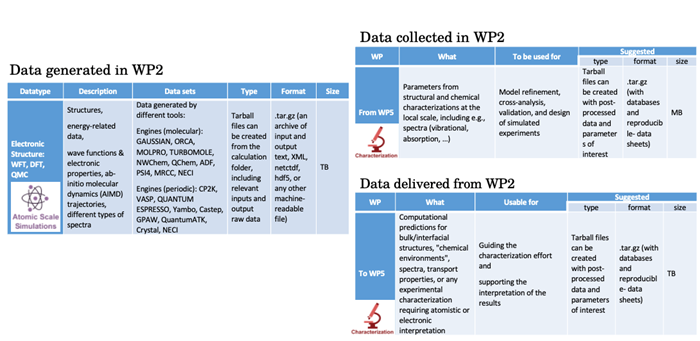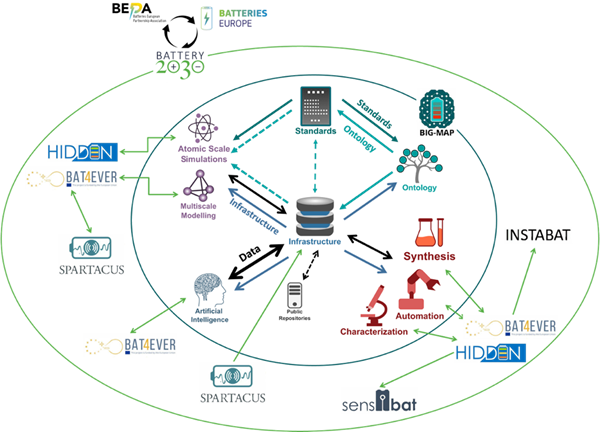Research Data Management in BIG-MAP
Nowadays, most grant authorities and academic institutions request a Data Management Plan (DMP) to be in place for the projects they fund. The DMPs should accurately describe the kind of research data generated and collected within the project, and the procedure applied to ensure that the storing, sharing, publication and preservation of the generated data comply with the FAIR (Findable, Accessible, Interoperable, Reusable) principles.1 Research data includes the results of experiments and simulations, as well as any material underpinning the results such as laboratory notebooks, standards and protocols, pictures and videos, scripts, and codes. No research group, centre, or institution can alone produce the quantity and variety of data needed for fulfilling BIG-MAP mission. This means data spanning multiple time and length domains. Sharing data is the solution, and a well-structured DMP is the tool to enable this.
Endorsed by BATTERY 2030+, BIG-MAP has created a pioneer DMP to accurately describe not only the flow of data from the project to the public but also the flow of data within a project, which becomes more and more essential the larger the project is.2 Central in the DMP is the use of data tables for each work package in which the generated data as well as the data collected and delivered to other work packages are described, as shown in the figure below.

Thanks to this, the data flow across the project can be drafted (as shown in the inner circle of the figure below). Moreover, thanks to the collaboration with BATTERY 2030+, several EU battery projects, have adopted the same DMP template. This has allowed to identify connections between the projects (as shown in the outer circle of the figure. Beyond this, the ambition is to connect BATTERY 2030+ with other battery initiatives, such as BEPA and Batteries Europe.

So far, most of the DMP is composed of text tables. To make it more operational, ontology concepts from BattINFO will soon be embedded into the DMP. By integrating ontology, standards, and research data management, we envision a new way of dealing with data towards an acceleration of materials design.
To store the data, a dedicated BIG-MAP data Archive able to store data from different sources, domain, and partners has been established. This infrastructure allows for FAIR sharing of the data among the BIG-MAP partners. A demo and a tutorial are available at the home page of BIG-MAP Archive (https://archive.big-map.eu). At the lowest tier, the Archive is accessible for the BIG-MAP partners and the BIG-MAP Archive is further being made available to the entire BATTERY 2030+ consortium. The core concept is that each project in BATTERY 2030+ has a dedicated workspace to store data and share it only among the project participants and, at a higher tier, each project can decide to share data between all the BATTERY 2030+ partners. At the highest tier, a decision to make the data available to the public (full open source) can be also taken. By using a single data infrastructure, interoperability and homogenization of the data are ensured, and easy sharing of data is enabled.
(1) The FAIR Guiding Principles for Scientific Data Management and Stewardship, Wilkinson et al., Sci Data 2016, 3 (1), 160018.
(2) Data Management Plans: The Importance of Data Management in the BIG‐MAP Project. Castelli et al., Batter Supercaps 2021, 4 (12), 1803–1812